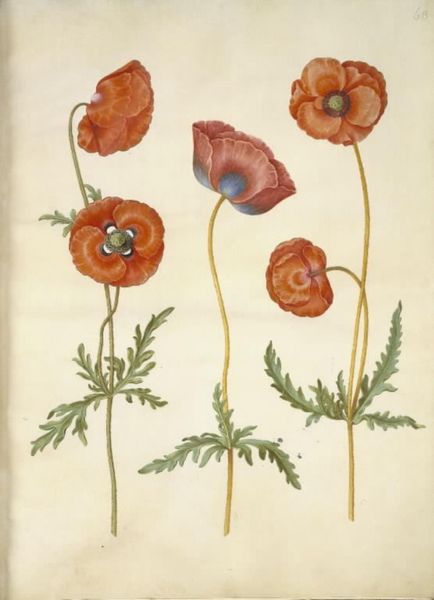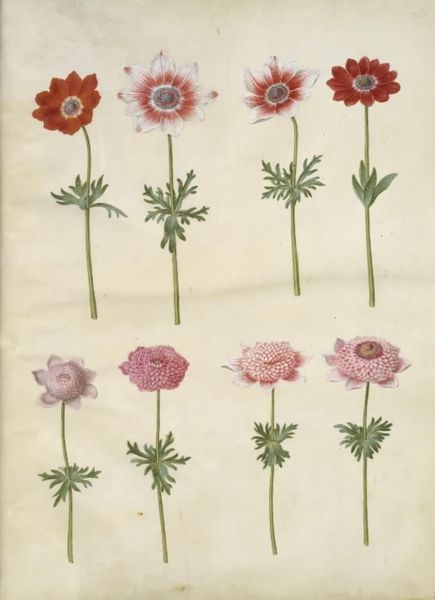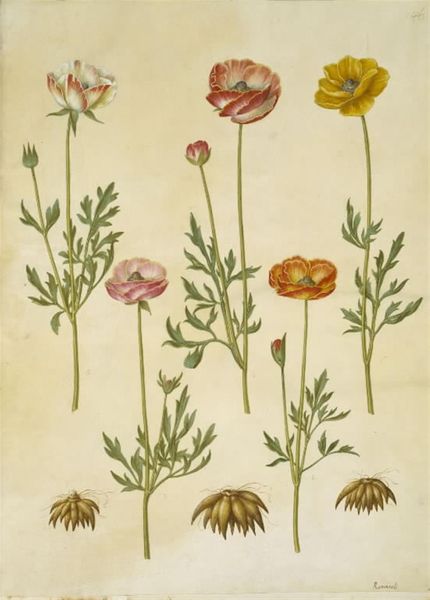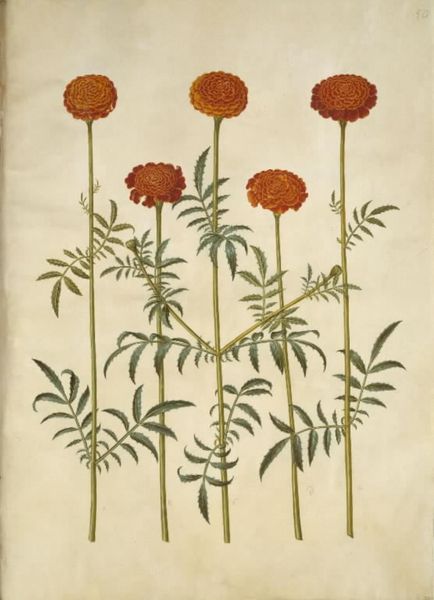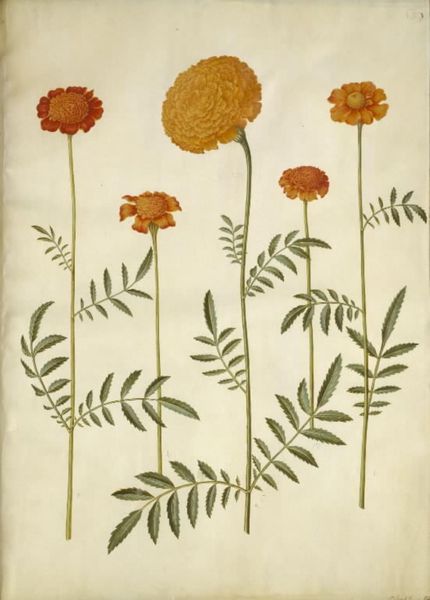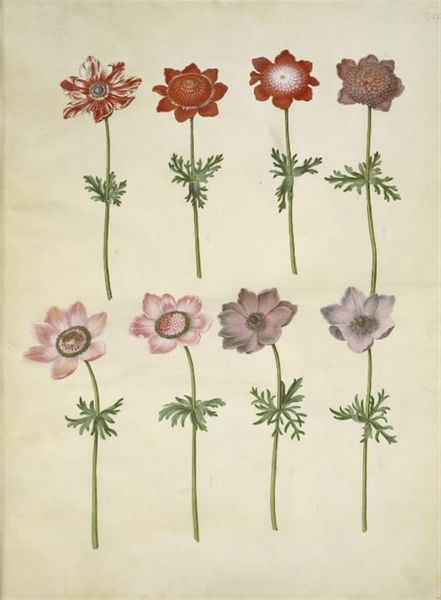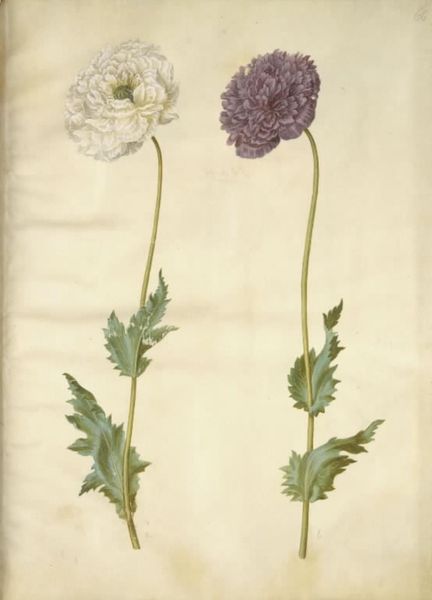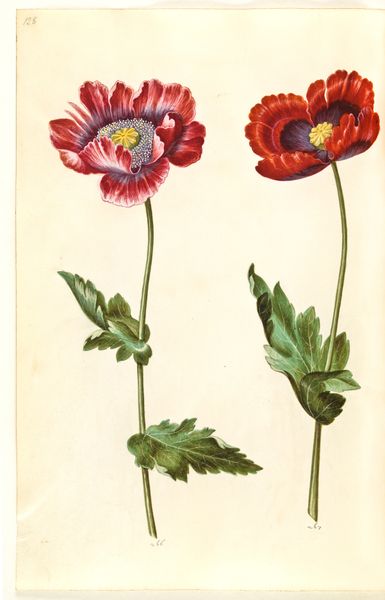
drawing, coloured-pencil, gouache, watercolor
#
drawing
#
coloured-pencil
#
gouache
#
watercolor
#
coloured pencil
#
realism
Dimensions: 505 mm (height) x 385 mm (width) (bladmaal)
Curator: Ah, isn't this captivating? We're looking at "Papaver rhoeas (korn-valmue)," or corn poppy, created between 1649 and 1659. Hans Simon Holtzbecker brought this piece to life using watercolor, gouache, and colored pencil. It's part of the collection here at the SMK. Editor: It strikes me as so delicate, almost fragile, even though poppies are rather bold in a field. There's a certain stillness that makes me want to hold my breath so as not to disturb it. Curator: That stillness you notice could be tied to the socio-political climate. Botanical illustration in that era served a crucial function – documenting nature in a time of expanding exploration. It's as much a scientific record as it is a piece of art. These detailed studies allowed for sharing knowledge among scholars and even empires. Editor: So, like visual memos? The blooms feel like tiny suns! There is almost too much detail, though...The leaves are crisp, almost brittle. Is that intensity something specific to botanical renderings of this time? Curator: Absolutely! Precision was paramount. Think about the patronage – often wealthy merchants and aristocrats. They funded expeditions, amassed cabinets of curiosities, and demanded accuracy in depicting their botanical trophies. Art, in this context, serves colonial interests and scientific documentation, which has lasting impacts on knowledge production today. Editor: It's interesting that something seemingly innocent—like a floral study—can have these underlying power dynamics. Seeing the painting again after hearing the details, I have to admit the artist's scientific fidelity now evokes something complex, the artist's dedication in recording something delicate with such intense clarity is stunning. What lasting message does this image give us? Curator: Perhaps, it’s a reminder of how intertwined art, science, and power truly are. Beauty often comes hand-in-hand with observation of the world. Holtzbecker asks us to reflect not only on the world around us but to wonder about what’s right in front of us.
Comments
No comments
Be the first to comment and join the conversation on the ultimate creative platform.

